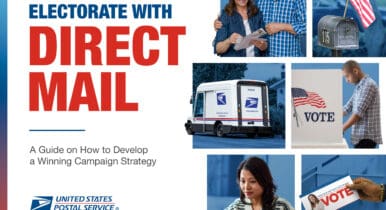Crafting Creative to Meet Voters Where They Are

Voter engagement consultant Atima Omara started her career canvassing and making calls from field offices. By 2016, she had moved beyond on-the-ground direct voter contact, but Donald Trump’s White House victory inspired her to rethink her career trajectory. For a time, she contemplated going back in the field or even running for office herself.
Ultimately, she decided to focus her work on the “rising American electorate,” which consists of young voters, women, and people of color. Now, she’s consulting for organizations and candidates and helping elect them or reach those voters and turn them out in higher numbers.
C&E: What issues are resonating with those voters right now?
Omara: For a lot of voters, especially voters of color and younger voters, it’s going to be abortion rights, it’s going be student loan debt, it’s going be the cost of living generally, it’s going to be racial justice, criminal justice reform, climate, and concerns about democracy.
C&E: You’ve raised a concern about appropriate stock footage and B-roll in ads. Is that something you’re still worried about?
Omara: My mom lived in this area that has become much more of a battleground since I was younger. She would sometimes show [mail pieces] to me when I was home, and I would often note how many were not representative of the community she lived in. It was a suburban area, and I think there was an assumption, like, it’s a suburb, it’s only white people in the suburb. The campaign ads that she saw, the mail pieces she received [featured] all white women, and it was talking about reproductive rights. And I thought, why isn’t the piece more racially diverse, reflecting the fact that the suburbs are increasingly more racially diverse than they have been in generations prior?
C&E: Do you think that’s just a problem in districts near major cities?
Omara: Even if mail pieces are going to rural areas, why aren’t they reflective of the fact that close to 25 percent of the rural areas have people of color? That sort of stuck in my mind. So when I’ve worked with certain clients recently, one told me ‘We have received draft ads from other vendors meant to go to voters of color and the [subjects] are all white.’
This is how someone like me gets recruited to work with them because I’m like, ‘You’re gonna have to change them because these are not [all-white communities]. We want to make sure digital ads, mail, and other paid communications are reflective of the community in which voters live.’ Don’t make an assumption of what a certain demographic of voters are about. Don’t look at polling and make assumptions based off of the top lines of a poll and not dig deeper. It can have you making some messaging mistakes.
C&E: What creative metrics are your clients gravitating to these days?
Omara: Higher completion rates on videos and the click-through rates are of interest to my clients.
C&E: Are you finding that some platforms are better for reaching voters in certain geographies?
Omara: I was working with a labor union that wanted to target working-class voters. But with cable packages being expensive, more people are cutting the cord so they’re less likely to be watching cable. So you’re going to want to figure out how to reach those folks — and many are watching shows online. If you’re wanting to reach young voters, you’re not going to get them on Facebook anymore, you’re probably going to want to hit them on Instagram or you’re going to want to think about having TikTok-friendly, IG-friendly creative sort of ads.
C&E: What trends are you watching?
Omara: I’m definitely watching AI and if that can be useful in any type of initial scripting. I’ve heard recently that folks are engaging more with ads on TikTok and IG with the vertical frame.


